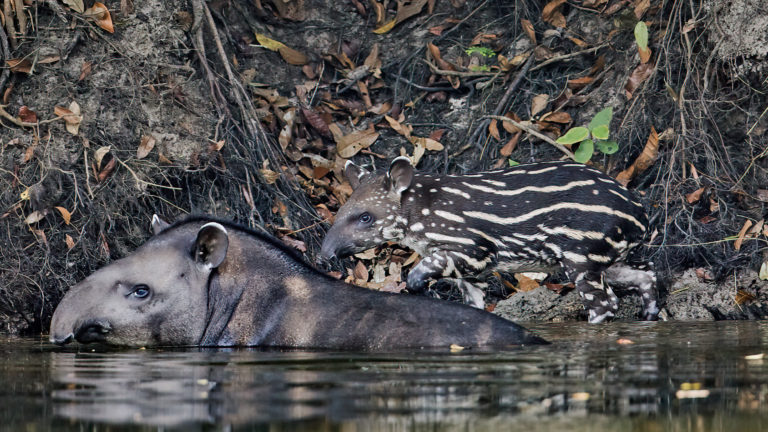
A lowland tapir with its calf. Guapiaçu Ecological Reserve reintroduced the lowland tapir to Rio de Janeiro for the first time in 100 years. Photo Credit: Nick Athanas via Flickr (CC BY-NC-SA 2.0)
Environment BrazilFrom Patches to Fields of Green: Thriving Forest, Happy Birds, and Quenched Thirsts!
The Atlantic Forest in western Brazil has been the focus of relentless restoration efforts over the last 15 years, and the once highly fragmented area is now home to hundreds of bird and tree species with a growing surface being restored back to its natural state.
“It’s a win-win,” states Nicholas Locke of Guapiaçu Ecological Reserve, or Regua, the nonprofit established in the early 2000s whose goal is to preserve and rewild the wetland. “The forest maintains biodiversity, connects existing forest fragments and contributes to water security for the watershed’s downstream population.”
Indeed, some 2.5 million people count on the Guapiaçu River Basin for their water supply. The Atlantic Forest is a wetland spanning 12,000 hectares in the state of Rio de Janeiro where 487 types of birds and hundreds of tree species now thrive following the replanting of 750,000 samplings planted over the last 20 years. Once stretching 1.2 million km2 – the size of Peru – the Atlantic Forest has been 90% cleared since the 1500s, and the remains are greatly fragmented. But being a region of high endemism, conserving it became a global priority. “It’s a biodiversity hotspot,” Thiago Belote, conservation specialist at World Wildlife Fund for Nature. Since 2009, the Trinational Atlantic Forest Pact, a coalition regrouping communities and NGOs has joined forces to restore 15 million hectares of native Atlantic Forest. Today, the lowland tapir – or Tapirus terrestris – is roaming the state of Rio de Janeiro for the first time in 100 years, a success story of the many restoration efforts invested in the forest.



